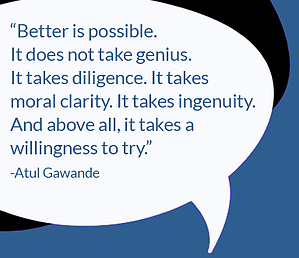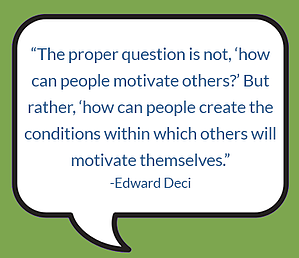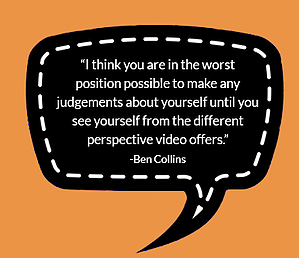We couldn’t be more excited to partner with Billy Spicer this year at ISTE. Given his background as an integration specialist and former teacher and instructional coach, Billy understands how powerful video can be for self-reflection, peer feedback and PLC collaboration. Video has made effective communication the foundation of his practice.

At the heart of a solid relationship lie trust and a spirit of collaboration. As a classroom teacher and integration specialist for over ten years, I made meaningful and effective communication the foundation of my classroom—it was simply the most important aspect when working closely with my learners. Although the idea of effective communication remains the same when making the shift to working mostly with adults, I knew a greater emphasis needed to be applied and mindfully crafted. My success as an instructional coach and specialist depends on knowing if I can learn to be better at listening, questioning, building emotional connections, and fostering productive dialogue.
One entry point I have enjoyed exploring as I continue working towards self-improvement is video. Why video? Simply put, video is a catalyst in fostering dialogue. And it is through the meaningful back and forth dialogue where true growth can occur. One will often come across coaching advice and programs that strictly state relationships and trust must be clearly established prior to bringing in video, but this piece will instead share my exploration and experience in building relationships while utilizing video to guide and inform instruction.
We’re In This Together
One of the first items I tasked myself with prior to committing to video was creating a guiding question to help guide my work. After several iterations, I landed on this: How can my interactions with colleagues become beacons of intellectual stimulation where growth is viewed in the development of educators who can question, create a goal + plan, and shift their practice to positively affect students’ experience in the classroom?

The Partnership Principles that Jim Knight writes about are a great starting point for those interested in learning more about building a disposition towards working with adult learners. It is the seventh principle that proved to be a game changer for me in my work with teachers. “When one teaches, two learn.” is the foundation of the reciprocity principle which is all about shared learning. My go-to strategy to help guide my behavior in the partnership principles was an easy decision: turn the camera on myself. If there was one way to help not only walk the talk, but also emphasize the importance in leveraging video to guide our work, it is to record my own facilitation sessions when teaching and or leading professional learning. I came to the realization pretty quickly that I can’t expect educators to willingly step into this realm, make themselves vulnerable, and use video to guide their growth if I’m not willing to do the same.
“Unlike humans, AI craves to know when it’s wrong.” Where others may find this quote a bit of a bummer, I find it to be quite encouraging. Why? Because in a #GrowthVsGotcha environment, it is the humans that crave to better themselves and improve their practice. As a coach it is my responsibility to create an environment in which teachers crave growth and seek out avenues to go outside of their personal comfort zone. If I do this effectively, educators will move beyond talking about their hopes and dreams for their students and instead turn their ideas + goals into action.

Video is a phenomenal way for teachers to get a clear picture of their instruction and how the students are progressing in class. But more importantly, in my opinion, is its ability to effectively monitor progress. I have partnered with teachers in the past that enjoyed the video element so much that they wanted to video multiple lessons a week! When I would ask them about this, they frequently referenced the fact that they would hang on to earlier recordings and rewatch them. They enjoyed observing the clear progress observed from the recording and felt encouraged that they were practice meaningful self-reflection that helped guide future instruction.
Feedback is a Gift
I recently had a thought in comparing the “smart” or adaptive playlists on streaming services to the desired symbiotic relationship between coach and teacher. Take my Spotify playlists for example. I am not forced into rating each song but simply listen to them or skip them as I listen, and songs that I love get added to my own playlists. As I continue to listen, Spotify learns my preferences and can serve up even better selections. There’s no forced nature to coaching Spotify, and each and every time I coach it up, there’s added value back to me as the listener. Most importantly, Spotify has earned my trust through guiding me to discover many new artists and, in doing so, earned the right to misfire and be vulnerable from time to time.

This idea of meaningful feedback correlates to a recent piece from the Harvard Business Review. Authors Marcus Buckingham and Ashley Goodall published The Feedback Fallacy detailing evidence in how feedback is both shared and received. They share some very intriguing information including “clear research” that points to this: Telling people what we think of their performance doesn’t help them thrive and excel, and telling people how we think they should improve actually hinders learning. This rings true when bringing in the importance to approach feedback as a gift. The key piece from their findings that stood out clear as day: feedback isn’t feedback when it’s just telling. As a coach, telling a teacher about their pitfalls and that “they’re doing it wrong” is not advisable. Instead, a dialogical approach brings the structure and foundation needed to truly leverage video as a partner in guiding future instruction.
Video changed everything for me. It has proven to be a powerful tool for bringing both accountability and autonomy to the relationships I work so hard to nurture and cultivate. To level up my relationships with teachers I needed something to disrupt the proceedings. Video was the answer and continues to be the answer in serving as a catalyst for making instructional pivots.






